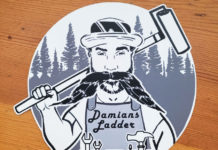Driving etiquette encompasses general rules of courtesy when we operate vehicles.
The term was used as early as the mid-1800s, in the era of the horse and buggy.
According to the U.S Department of Transportation, there were 5.5 million automobiles sold in the United States in 2009. Of every 1,000 people, 438 drive.
We seldom think of a car as a weapon, but with an average vehicle weight of 4,000 pounds, a careless or distracted driver can cause severe damage or death.
That is exactly why we need to practice courtesy and respect on the roadways.
On the highway
We would never think of walking in front of a long line of people at the market or cinema and cutting in. Yet, many people feel quite comfortable performing frequent and unsafe lane changes just to get a car or two ahead.
To be considerate drivers, we must yield to faster-moving traffic. Moving over to the right is polite; by failing to yield, we increase tension and serve no one’s interest.
We have this thing called personal space. Every culture has its own measure of comfort, but in America, we feel uncomfortable if someone gets too close — much less butts up against us.
When some people get into cars, however, something unusual happens. The same people complaining about invasions into their personal space will somehow end up at the tail of your car, traveling close and fast, even if you are in the slow lane. You know, pushers or aggressive tailgaters. They will push you from behind at excessive speeds. There is no subtlety to this.
Could you imagine walking fast and someone deciding to approach really close behind you?
When walking, people go around. When they are not in their fortress called a car, they are polite and say “excuse me” — but if they get behind the wheel of an automobile, SUV or truck, their behaviors strangely change.
Then there is the “king of the road” syndrome, a refusal to slide over to the left lane to allow another driver to enter the road. Please move to the left when it is safe. This is called courtesy. “Merge” does not mean “stop.”
The multi-tasker
Cars are now engineered for safety, but we cannot count on the car to protect us always, which brings me to the problem of multi-taskers. These people, while driving, talk on a cellphone, text, apply makeup, eat, even read a newspaper. Distracted drivers are neither courteous nor respectful, but dangerous.
We are overbooked, overworked, tired, with not enough day and more to be done, but with millions of drivers on the road, the general rule of courtesy is essential and necessary.
Driving together
A considerate driver and passenger make a long drive much easier. When possible, try to make your passengers comfortable. Be accommodating of their needs to stretch their legs, get a drink of water or take a bathroom break.
As a passenger, show respect for the driver’s car; if you need to adjust your seat, use the mirror or open the window, it is polite to ask before doing so.
Around town
Never steal into a parking space when another motorist has already indicated interest to park there, and never park in a handicap-reserved spot if you are not disabled, simply because it is closest to the door. Those parking areas are for people who need them.
Be respectful of pedestrians; wait until they have completely crossed the road before moving. Remember that some people need a little more time.
Staying safe
Do not drink and drive; know your limits.
The sound of an emergency vehicle means move over — someone’s life is in danger. Let’s be helpful by getting out of the way.
Safety laws are made to protect driver and passengers. The general rule of etiquette for driving is courtesy.
Good driving etiquette can save lives.
– Zeda Dowell of Ben Lomond answers questions, teaches classes and provides information about international protocol, dining, being a gentleman and cultural diversity. Contact her at ze********@***il.com.












